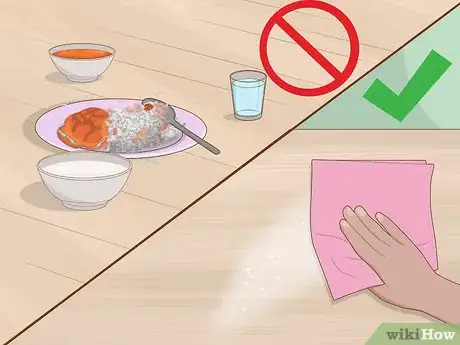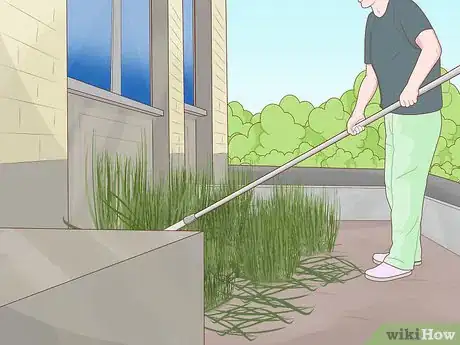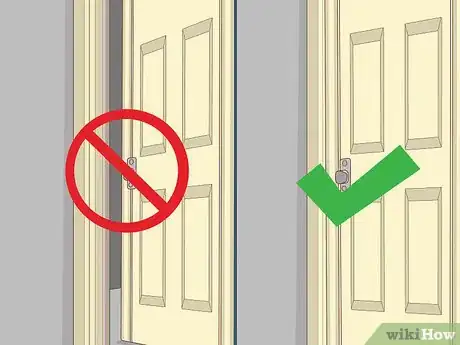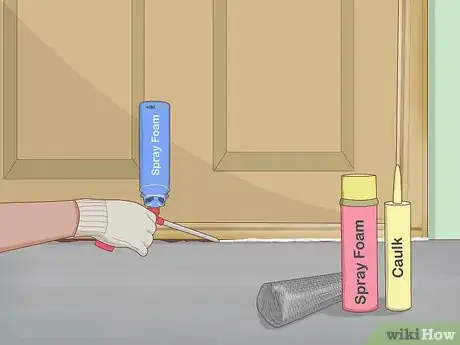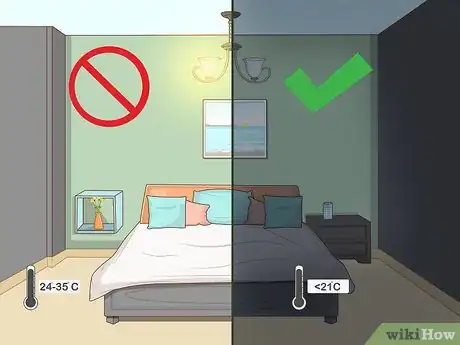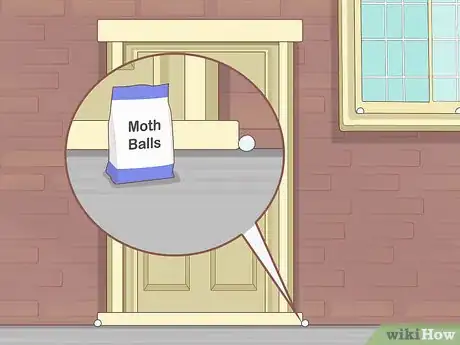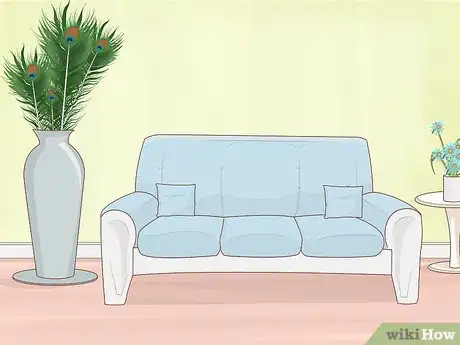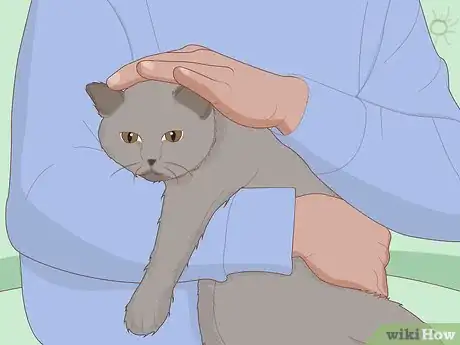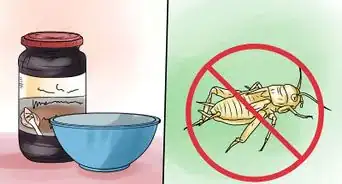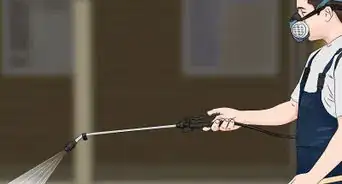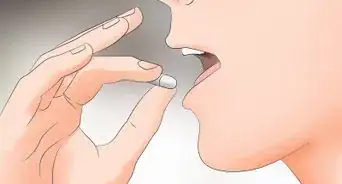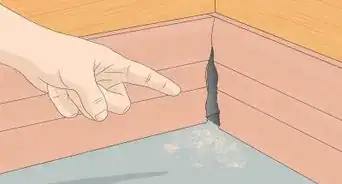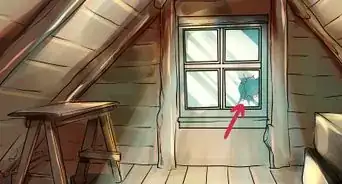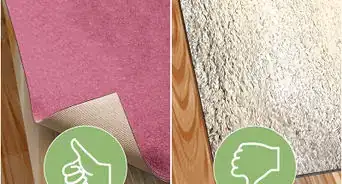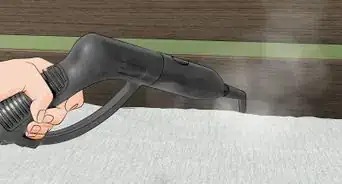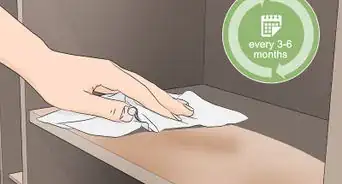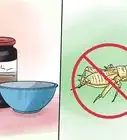This article was co-authored by Scott McCombe. Scott McCombe is the CEO of Summit Environmental Solutions (SES), a family-owned local pest solutions, animal control, and home insulation company based in Northern Virginia. Founded in 1991, SES has an A+ rating with the Better Business Bureau and has been awarded “Top Rated Professional,” and “Elite Service Award" by HomeAdvisor.
This article has been viewed 25,956 times.
Lizards are a common pest in warm climates. While they don’t cause any damage and don’t usually infest, they can be unsightly and give many people the jitters. The best way to get rid of lizards is to keep your home clean and clutter-free. A clean, tidy home offers fewer hiding spots and attracts fewer insects, which are lizards’ main food source. Eliminating points of entry is also important, so seal any cracks or crevices with weather stripping, caulk, spray foam, or wire mesh. You can also try home remedies that could repel lizards, such as eggshells, mothballs, and peacock feathers.
Steps
Keeping your Home Clean and Tidy
-
1Get rid of newspapers, boxes, and other potential hiding places.[1] Clutter provides lizards with hiding spots, so stick to a regular cleaning schedule. Nip messes in the bud, and throw away paper, magazines, boxes, and other debris before they pile up around the house.
- Clutter also provides hidings spots for insects and spiders, which are lizards’ food sources.
-
2Avoid keeping food out and clean up food scraps. Clean up crumbs, wipe down counters, and mop the floor after cooking or spilling food. Keep food in sealed containers, especially if you’ve noticed flies or other insects. Food attracts bugs, and eliminating food sources is essential to keeping away lizards.Advertisement
-
3Use insecticides and adhesive traps to get rid of insects. If you regularly see insects and spiders in your home, spray an indoor insecticide at points of entry, corners, crevices, and your home’s other nooks and crannies. Place adhesive insect traps by doors and windows, behind furniture, and under kitchen cupboards, and replace them with fresh traps regularly.
- Read your product’s instructions and use it as directed. Follow any recommended safety precautions, such as wearing protective gloves or a mask.
- If you have trouble controlling an insect infestation, call a professional exterminator.
-
4Keep outdoor areas around your home mowed, trimmed, and tidy.[2] Mow the grass regularly, and trim back tall plants along your home’s exterior walls. Keep outdoor trash receptacles tightly closed, and avoid storing firewood, lumber, and other potential lizard habitats next to your home.[3]EXPERT TIPScott McCombe is the CEO of Summit Environmental Solutions (SES), a family-owned local pest solutions, animal control, and home insulation company based in Northern Virginia. Founded in 1991, SES has an A+ rating with the Better Business Bureau and has been awarded “Top Rated Professional,” and “Elite Service Award" by HomeAdvisor.Pest Control Specialist

 Scott McCombe
Scott McCombe
Pest Control SpecialistOur Experts Agree: Lizards are attracted to homes for moisture, food, and habitat. To mitigate their populations, make sure there's no clutter or overgrowth, and remove any standing water or areas that are chronically wet around your home. Also, treat for the food sources of the lizards, which include insects, small arthropods, and slugs.
Sealing Points of Entry
-
1Avoid keeping doors and windows open. Close the door unless someone is entering or leaving the house. Even if you’re bringing in groceries or other items, keep the door closed between trips to prevent any little green visitors from scurrying inside. Keep the windows closed as well, especially if you don’t have screens or if screens have any tears.[4]
-
2Install snug weather stripping and window screens. If there’s any gaps between an exterior door and the floor or jamb, install adhesive weather stripping, which you can find at your local home improvement store. Replace torn screened windows, or keep your windows closed at all times if you don't have screens.[5]
- If you don’t have screened windows but want to keep a window open, you could purchase an adjustable, removable screen panel.
-
3Seal cracks and crevices with caulk, spray foam, or wire mesh.[6] Examine your home’s exterior walls, roof line, windows, and utility connections. Fill in smaller cracks with waterproof caulk or spray foam. Cover any exposed vents or large gaps with wire mesh or hardware cloth.[7]
- Look for mesh or hardware cloth labelled for rodent or bird deterrence online or at a home improvement store.
Repelling Lizards with Home Remedies
-
1Keep your home cooler and darker. Lizards are cold-blooded, so they love bright, warm environments. Turning off the lights when you leave a room can make that area less hospitable. Additionally, try keeping the temperature in your home under 70 °F (21 °C).
- Most house lizards, such as anoles and geckos, thrive in temperatures between 75 and 95 °F (24 and 35 °C).[8]
-
2Put containers of mothballs near doors and windows. While there’s no scientific evidence to back it up, some people use mothballs to repel lizards. Try keeping bags or open containers of mothballs by doors, windows, and other points of entry.[9]
-
3Work peacock feathers into your decor. Again, while there’s no scientific evidence, peacock feathers might help keep lizards out of your home. Lizards could be scared by the big eye designs or think that feathers indicate a nearby predator. Peacock feathers are aesthetically pleasing, too. Try placing a jar or bottle filled with feathers by your exterior doors.
-
4Try placing egg shells near points of entry. Some people claim that lizards are afraid of eggshells. The sight and smell of egg shells could make a lizard think that a bird or other predator is nearby.[10]
-
5Consider getting a cat. Cats are great for deterring lizards, rodents, and other pests. However, keep in mind that cats like to play with their food and often give prey to their owners as presents. Getting rid of a live lizard might be less disgusting than dealing with one that your cat got to first.[11]
Expert Q&A
-
QuestionHow do I get rid of lizards in my yard?
 Scott McCombeScott McCombe is the CEO of Summit Environmental Solutions (SES), a family-owned local pest solutions, animal control, and home insulation company based in Northern Virginia. Founded in 1991, SES has an A+ rating with the Better Business Bureau and has been awarded “Top Rated Professional,” and “Elite Service Award" by HomeAdvisor.
Scott McCombeScott McCombe is the CEO of Summit Environmental Solutions (SES), a family-owned local pest solutions, animal control, and home insulation company based in Northern Virginia. Founded in 1991, SES has an A+ rating with the Better Business Bureau and has been awarded “Top Rated Professional,” and “Elite Service Award" by HomeAdvisor.
Pest Control Specialist Lizards will look for places to hide, so trim back plants to get rid of overgrowth. If they get into your home, seal any cracks on exterior walls.
Lizards will look for places to hide, so trim back plants to get rid of overgrowth. If they get into your home, seal any cracks on exterior walls.
References
- ↑ Scott McCombe. Pest Control Specialist. Expert Interview. 19 November 2019.
- ↑ Scott McCombe. Pest Control Specialist. Expert Interview. 19 November 2019.
- ↑ https://www.ces.ncsu.edu/gaston/Pests/reptiles/lizards.html
- ↑ http://www.homeanddecor.com.sg/articles/79583-lizards-how-get-rid-them-naturally
- ↑ https://www.ces.ncsu.edu/gaston/Pests/reptiles/lizards.html
- ↑ Scott McCombe. Pest Control Specialist. Expert Interview. 19 November 2019.
- ↑ https://www.ces.ncsu.edu/gaston/Pests/reptiles/lizards.html
- ↑ http://www.peteducation.com/article.cfm?c=17+1796&aid=3304
- ↑ http://indiatoday.intoday.in/story/tricks-and-tips-to-keep-away-lizards-from-home-coffee-garlic-egg/1/675930.html
About This Article
To keep away lizards, start by getting rid of newspapers, boxes, and other clutter to eliminate potential hiding places. Also, try to mow your grass regularly and keep tall plants around your home trimmed to remove potential lizard habitats. Remember to keep your doors and windows closed so the lizards can't enter the house, and put containers of mothballs near doors and windows to repel them. Finally, seal any cracks and crevices in your home's exterior walls with caulk or spray foam to keep out lizards! For tips on eliminating lizard food sources, read on!

